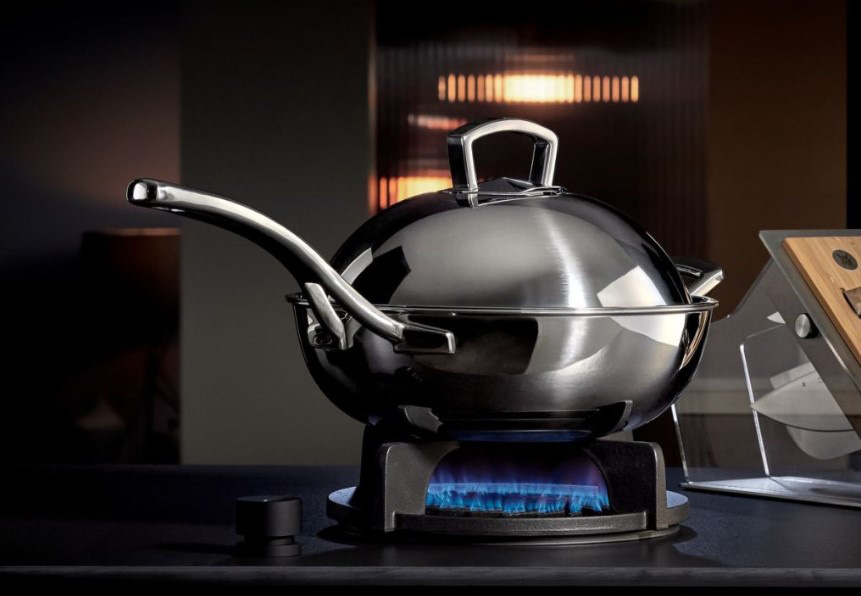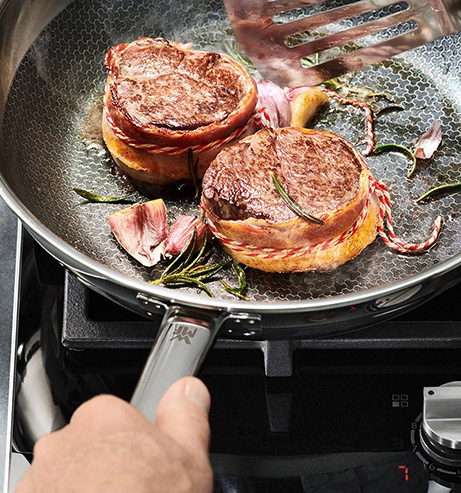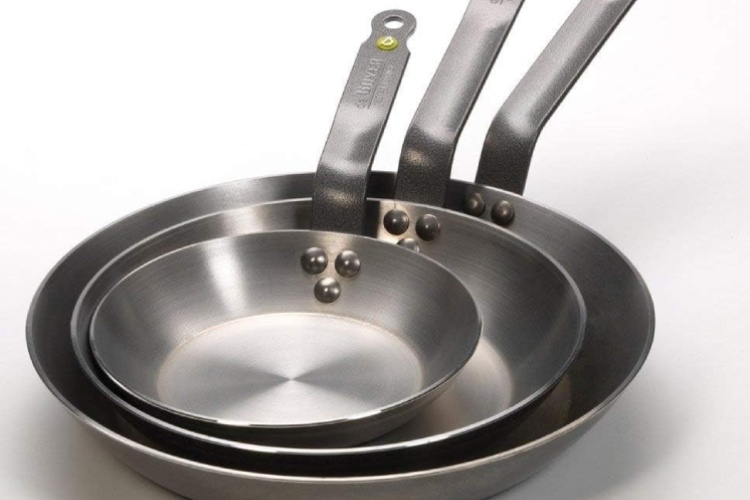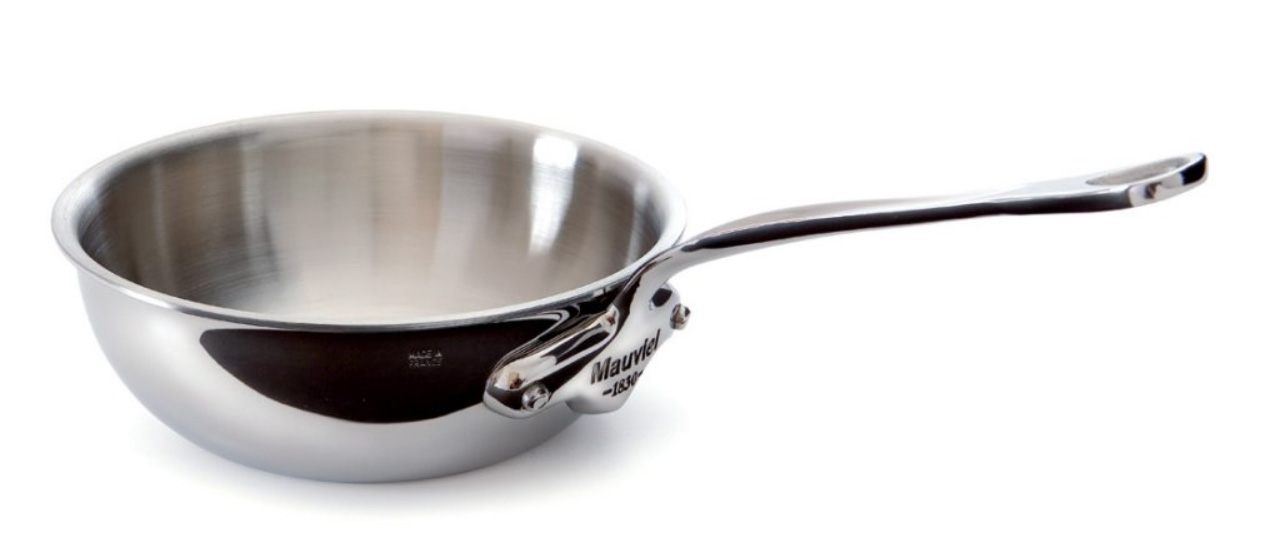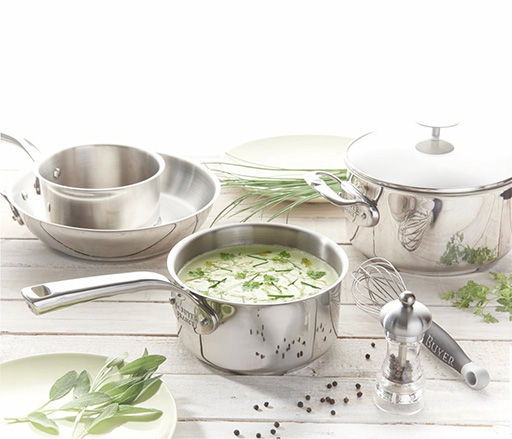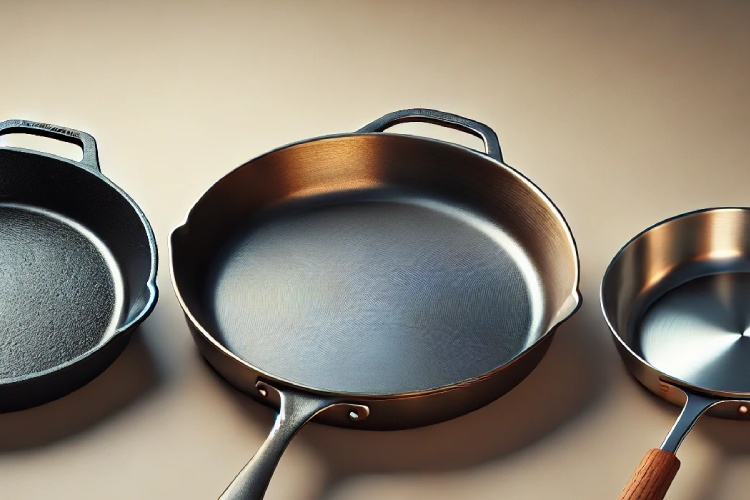When it comes to cooking, the right choice of kitchen utensils can make a big difference to the quality and taste of your food. One of the key pieces in every home cook's kitchen is undoubtedly the frying pan. Among the various types and materials of pans, stainless steel ranks high thanks to its durability, versatility and, last but not least, its aesthetic appearance. It's simply beautiful, can withstand the soaking of burnt food and can be safely washed in the dishwasher.If you're already looking for stainless steel pan, with our guide you will surely make the right choice.
A little theory:
What is stainless steel?
Stainless steel is an alloy of iron, chromium, nickel and in some cases other elements such as molybdenum or titanium that improve its properties. Today we even know more than 200 types of stainless steel!
The added elements make stainless steel, as its name suggests, corrosion and stain resistant. This makes it the ideal choice for kitchen utensils that you want to keep aesthetically pleasing - stainless steel cookware will simply last a long time with the right care.
Important parameters:
How to choose (not only) a stainless steel pan?
When choosing a stainless steel pan, it is important to consider several criteria that match your cooking style:
- The size of the pan: It should match the amount of food you usually prepare and the size of your cooker or hob. Smaller pans (around 20cm in diameter) are great for preparing meals for one or two people. Larger pans (28cm or more) are ideal for cooking for the whole family or if you're preparing food for several days.
- The type of pan and its shape: Stainless steel pans also differ in their purpose and shape. Deep frying pans with high edges are ideal for frying, braising or preparing sauces. Flat and wide pans are suitable for frying meat, vegetables or for making pancakes. Consider what you cook most often and choose the appropriate type of pan based on that. The shape of the pan also affects the evenness of heat distribution and the ease of handling food during cooking.
- Handle type: The handle is crucial for safe and comfortable work with the pan. It should be sturdy and ergonomically shaped for your comfort. The material of the handle is also important: metal handles are resistant to high temperatures and allow the pan to be used in the oven, while plastic or wooden handles are not suitable for this purpose but may offer better thermal insulation.
Our tip
Read
Also

How to choose the right size pan?
The size of the pan doesn't just affect how many mouthfuls you can eat. Learn how to choose the right pan size for your needs.
Benefits
stainless steel pans
Corrosion resistance
Due to its high chromium content, stainless steel is rust-resistant, unlike carbon steel or cast iron.
Long service life
Stainless steel pans are known for their durability and ability to withstand years of heavy use.
Easy maintenance
Despite the occasional sticking of food, stainless steel pans can be easily cleaned and can
to unwash them.
Neutral behaviour towards food
Stainless steel doesn't interact with food, so it doesn't affect the taste or release any harmful substances into the food.
High heat resistance
Stainless steel pans can withstand high temperatures, allowing cooking techniques such as baking or flambéing without having to worry about the pan.
Versatility and aesthetic appearance
The stainless steel pan is suitable for a variety of cooking methods, from frying to slow cooking. And last but not least, it will really suit your kitchen.
Disadvantages of stainless steel pans
Nothing is perfect, and that includes stainless steel pans. Their higher purchase price and the potential difficulty of food adhesion may deter some users. In addition, stainless steel pans require specific care to maintain their shiny appearance.
- Higher purchase price: Quality stainless steel pans tend to be more expensive than pans made of other materials.
- Food can stick: Without proper cooking technique and enough fat, food can stick to the surface of the pan.
- Uneven heat distribution: Single stainless steel isn't the best heat conductor, so some stainless steel pans come with a multi-layered bottom that distributes heat more evenly.
- Some maintenance required to maintain appearance: In order to stay beautiful, pans may require occasional polishing and special cleaning to remove scorch marks or water spots.
Jakub Černý, Head of Purchasing at Kulina
Stainless steel pans are undoubtedly an excellent addition to any kitchen. Thanks to their durability, versatility and ease of maintenance, they deserve a place in the arsenal of anyone who enjoys cooking. Although they do require some initial investment and perhaps a slightly different approach to cooking, the benefits they offer are invaluable. With a little practice and proper care, a stainless steel skillet can become your best friend in the kitchen, serving you for years without harm. At Kulina you will findwide selection of stainless steel pans from leading manufacturers, you can't go wrong with brands WMF or DeBuyerfor the quality of which we will give the hand of fire.
Best stainless steel pans according to customer reviews
Differences between stainless steel and carbon steel
The main difference between stainless steel and carbon steel lies in their composition and properties.
Carbon steel is known for its ability to maintain temperature well, but on the other hand it is neededcarbon steel pans do not soak longer than necessary, and keep them as dry as possible to protect them from corrosion.
It is also advisable to treat carbon steel with oil or other grease regularly to maintain its natural non-stick properties. Stainless steel is easier to maintain and care for than carbon steel, it is not subject to corrosionbut may not distribute heat as well on certain models.
Care of stainless steel pan
To maintain the quality and appearance of your stainless steel pan for the long term, it is important follow a few basic rules of care:
- Avoid using abrasive cleaning agents.
- Always dry the pan well to avoid stains from dried water droplets.
- For a flash-like shine, polish the pan.
Practical accessories for gentle and convenient dishwashing
Our tip
Read also

Cast iron, steel, stainless steel: the big comparison of pans
Wondering which pan material is right for you? And what makes them so different? Find the answers in our expert guide.
Yes, most stainless steel pans are suitable for use on induction hobs, but we recommend checking with your specific model.
Allow the pan and oil to heat sufficiently before adding the food. This helps create a natural non-stick layer and prevents sticking.
Although most stainless steel pans are dishwasher safe, hand washing is recommended to maintain their shine. However, the actual performance of a stainless steel pan is generally not compromised by dishwasher use, unless otherwise specified for a particular model.

